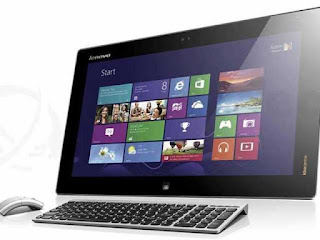Development in technology
The simplest form of technology is the development and use of basic tools.
Technology has many effects as it include the printing press, the telephone, and the Internet, have lessened physical barriers to communication and allowed humans to interact freely on a global scale.Now coming to the history and development in the field of computers their are many more things. The first thing that comes in our mind that why the computers are invented? Let us know the reason why and when.
Why computers are invented ?
The computer was invented in order to automate mathematical calculations that were previously completed by people. Charles Babbage is considered to be the “father” of the computer. Babbage was a mathematician, philosopher, inventor and mechanical engineer who saw a need for an automated system that would negate human error in computation.
GENERATIONS OF COMPUTERS
Computer generations are based on when major technological changes in computers occurred, like the use of vacuum tubes, transistors, and the microprocessor. As of 2020, there are five generations of the computers.
First generation of computer
The first generation of computers used vacuum tube.Vacuum tubes were widely used in computers from 1940 through 1956.
First generation computers being quite large in size, taking up a lot of space in a room. Some of the first generation computers took up an entire room.
Second generation computers
The second generation computers was formed between the time period of 1959-1965. In this generation, transistors were used that were cheaper, consumed less power, more compact in size, more reliable and faster than the first-generation machines made of vacuum tubes.
Some of the examples of second generation computers are:
IBM 1620, IBM 7094, CDC 1604, CDC 3600. As a result, they worked on AC and therefore were faster than their predecessors.
Third Generation computers
The period of third generation was from 1965-1971. The computers of third generation used Integrated Circuits (ICs) in place of transistors.
Fourth generation computers
The period of fourth generation was from 1971-1980. Computers of fourth generation used Very Large Scale Integrated (VLSI) circuits.
They allow multiple common operations to be performed with a single programmer-entered command.
Some other examples of fourth generation computers are included: IBM 4341, DEC 10, STAR 1000 and PUP 11.
Fifth Generation computers
In 1982, the fifth-generation computer system was begun by Japan's Ministry of International Trade and Industry. In this generation, the VLSI technology has advanced and become ULSI technology, stands for Ultra Large-Scale Integration.
The key technologies for the Fifth Generation Computer System (FGCS) seem to be VLSI architecture, parallel processing such as data flow control, logic programming, knowledge base based on relational database, and applied artificial intelligence and pattern processing.
Sixth Generation Computers
New 6th Gen Intel Core-based systems are more responsive than ever with enhanced performance, battery life and security.
Windows 10 and beautiful new systems from PC manufacturers make this the best time ever to buy a new computers.
6th Gen Intel Core processor family is the most scalable ever for consumers and businesses, enabling the broadest range of designs from the smallest Intel Compute Stick and All-in-One desktops, to 2 in 1s, notebooks and the first-ever Intel® Xeon® processor for mobile workstations.










good job
ReplyDeleteGood information
ReplyDeleteNice
ReplyDeleteSuprr
ReplyDeleteNYC ONE
ReplyDeleteThanks everyone
ReplyDeleteKya baat hai
ReplyDeleteThanks it's help me a lot
ReplyDeleteTnxs to all
ReplyDeleteSuprrr
ReplyDelete